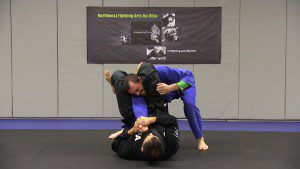 Is Jiu Jitsu good for flexibility?
Is Jiu Jitsu good for flexibility?
Adequate flexibility is a necessary component of peak athletic performance. Poor flexibility, on the other hand, limits movement and increases the risk of injury. Fortunately, there are a number of ways to maintain and improve flexibility, one of which is the practice of Brazilian Jiu-Jitsu. Improved flexibility, developed through BJJ, can increase aerobic performance and enhance muscular conditioning. In addition, there is scientific evidence that flexibility training can drastically decrease the incidence of injury.
Below are some of the ways that BJJ helps improve flexibility.
1) BJJ warm-ups – Most BJJ classes begin with a warm-up. This typically consists of a combination of cardiovascular exercise and stretching. While this is primarily done to improve conditioning and loosen the muscles to prevent injury, it has the additional effect of improving flexibility over time. Most students find that their flexibility has greatly improved within a few months of beginning BJJ, which can at least be partially attributed to this weekly stretching and conditioning routine.
2) BJJ movements – Many common BJJ movements stretch the body in atypical ways, leading to flexibility in areas not commonly targeted by traditional stretching routines. The shrimp, for example, in addition to stretching the legs, arms, and hips, results in a rounding of the back, which is a movement not often performed in day-to- day life. The repeated performance of this movement, combined with proper rest, can lead to an increase in back flexibility and health. Even the drilling and performance of certain submissions can result in improved flexibility. Inverted techniques, in particular, when drilled often, can increase flexibility in multiple areas of the body.
Other options
3) Increased body awareness – The practice of BJJ promotes body awareness, which in turn allows us to pinpoint areas of the body that require flexibility improvement. Often, when we have trouble performing a certain movement, we are forced to examine the reasons behind this deficiency. Part of this examination typically includes the identification of personal physical limitations. Once these limitations are identified, we’re then able to begin devoting additional time to their development. Often, muscular stiffness is at least one component impeding our performance. The desire to successfully perform certain movements, combined with the identification of specific deficiencies in flexibility, leads us to target these areas for improvement.
4) Supplemental training – Students who are serious about progressing in BJJ often seek out additional physical activities to supplement their training. This happens to be one of the great things about BJJ: it leads us to pursue activities that we may never have attempted otherwise. A common supplemental activity practiced by BJJ students is yoga. Yoga, with its focus on balance, strength, and flexibility, is an ideal companion to BJJ. Other activities typically practiced by BJJ students, such as swimming, Ginastica Natural, and kettlebell training can all improve flexibility.
Check out this video of a short good stretching routine to help with your flexibility.
BJJ is an excellent method of improving flexibility, which is required in both athletics and daily life. So go to class, supplement your training, and most importantly…have fun!



